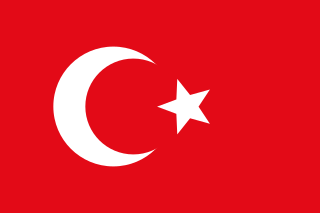 W
WThe Ottoman Empire was founded circa 1299 by Osman I as a small beylik in northwestern Asia Minor just south of the Byzantine capital Constantinople. The Ottomans first crossed into Europe in 1352, establishing a permanent settlement at Çimpe Castle on the Dardanelles in 1354 and moving their capital to Edirne (Adrianople) in 1369. At the same time, the numerous small Turkic states in Asia Minor were assimilated into the budding Ottoman sultanate through conquest or declarations of allegiance.
 W
WBritish foreign policy in the Middle East has involved multiple considerations, particularly over the last two and a half centuries. These included maintaining access to British India, blocking Russian or French threats to that access, protecting the Suez Canal, supporting the declining Ottoman Empire against Russian threats, guaranteeing an oil supply after 1900 from Middle East fields, protecting Egypt and other possessions in the Middle East, and enforcing Britain's naval role in the Mediterranean. The timeframe of major concern stretches from the 1770s when the Russian Empire began to dominate the Black Sea, down to the Suez Crisis of the mid-20th century and involvement in the Iraq War in the early 21st. These policies are an integral part of the history of the foreign relations of the United Kingdom.
 W
WThe Economic history of the Ottoman Empire covers the period 1299–1923. Trade, agriculture, transportation, and religion make up the Ottoman Empire's economy.
 W
WThe Ottoman Empire used a variety of flags, especially as naval ensigns, during its history. The star and crescent came into use in the second half of the 18th century. A buyruldu (decree) from 1793 required that the ships of the Ottoman Navy were to use a red flag with the star and crescent in white. In 1844, a version of this flag, with a five-pointed star, was officially adopted as the Ottoman national flag. The decision to adopt a national flag was part of the Tanzimat reforms which aimed to modernize the Ottoman state in line with the laws and norms of contemporary European states and institutions.
 W
WAutonomy for the region of Macedonia and Adrianople Thrace within the Ottoman Empire was a concept that arose in the late 19th century and was popular until ca. 1920. The plan was developed among Macedonian and Thracian Bulgarian emigres in Sofia and covered several meanings. Serbia and Greece were totally opposed to that set of ideas while Bulgaria was ambivalent to them. In fact Sofia advocated granting such autonomy as a prelude to the annexation of both areas, as for many Bulgarian emigres is was seen in the same way.
 W
WMacedonia for the Macedonians is a political slogan used during the first half of the 20th century in the region of Macedonia.
 W
WThe Ottoman Caliphate, under the Ottoman dynasty of the Ottoman Empire, was the last Sunni Islamic caliphate of the late medieval and the early modern era. During the period of Ottoman growth, Ottoman rulers claimed caliphal authority since 1517 since Selim I, through conquering and unification of Muslim lands, became the defender of the Holy Cities of Mecca and Medina which further strengthened the Ottoman claim to caliphate in the Muslim world since 1517.
 W
WThe problem of two emperors or two-emperors-problem is the historiographical term for the historical contradiction between the idea of the universal empire, that there was only ever one true emperor at any one given time, and the truth that there were often two individuals who claimed the position simultaneously. The term is mostly used in regards to medieval Europe and is often used in particular for the long-lasting dispute between the Byzantine emperors in Constantinople and the Holy Roman emperors in modern-day Germany and Austria as to which emperor represented the legitimate Roman emperor.
 W
WRūm millet, or "Roman nation", was the name of the Eastern Orthodox Christian community in the Ottoman Empire. Despite being subordinated within the Ottoman political system, the community maintained a certain internal autonomy.
 W
WThis article provides a timeline of the Ottoman Empire